Three Works: Art Highlights from Murders at Karlov Manor
The best pieces of art, and where things fell short, in Magic's newest set
As this new space continues to get rolling, a new Magic set has been released into the wild, and there is much to talk about.
Murders at Karlov Manor is Magic’s newest “backdrop set.” Taking place on Ravnica, a place where the game has been many times, the release has an entirely new spotlight. The tale turns away from the Guilds at its center, and follows a new storyline, new characters, and as such, employs a new artistic focus. Rather than highlight the uniqueness of the ten guilds as has happened in previous visits, Murders leans into the murder mystery tropes of the mid-20thC and skins them onto Magic, from hard-boiled detective dirt to noir fiction, with all of the violence but none of naughty.
My artistic review, as I’ve done with each set for close to five years now, was an interesting exercise. Normally I have a large list of works to include, and whittle them down as I begin with what I think are the best. But this time, it was not the case. Fewer works stood out as exceptional, and of some of those that did, I had nothing to contribute from a criticism standpoint. They were well above the average and noteworthy in their own right, but there was nothing I could say that that hadn’t been already, aside from “this is a very good artwork” or “this exemplifies this set.” And while I suppose that’s entirely fine, it doesn’t make for a very interesting art review, now does it?
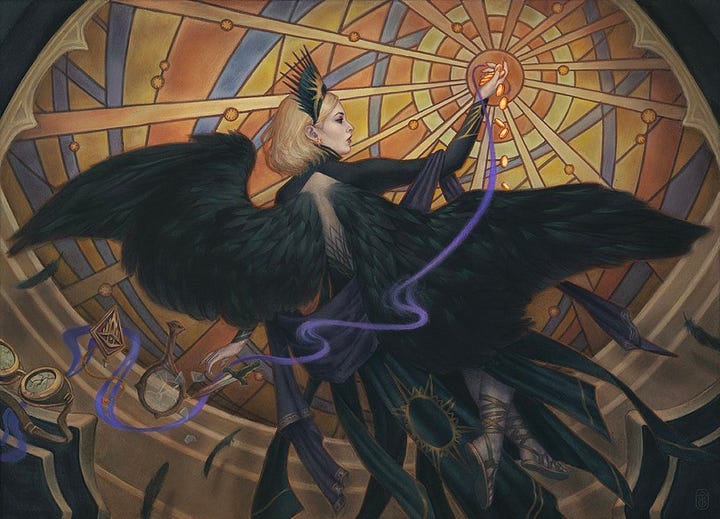
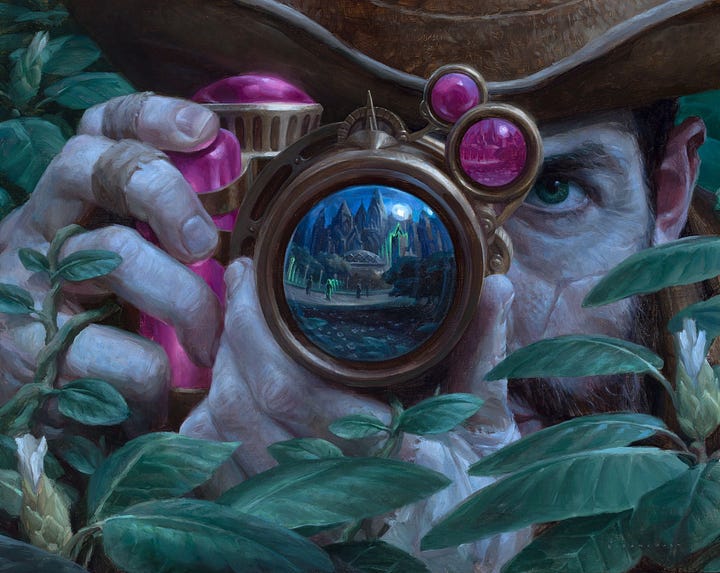
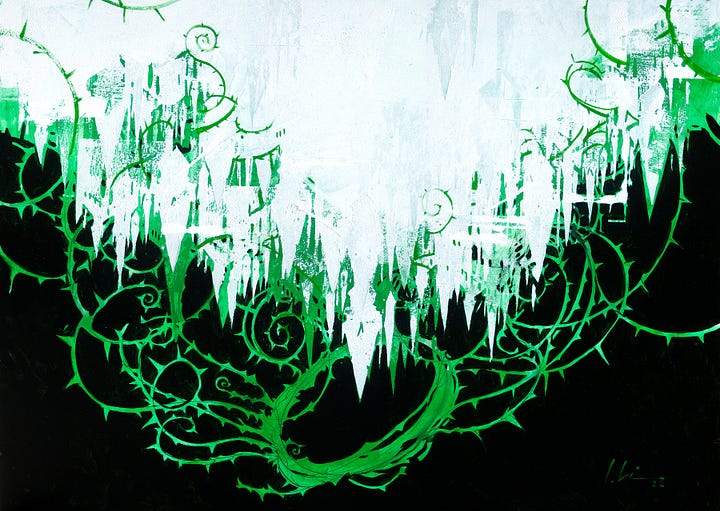
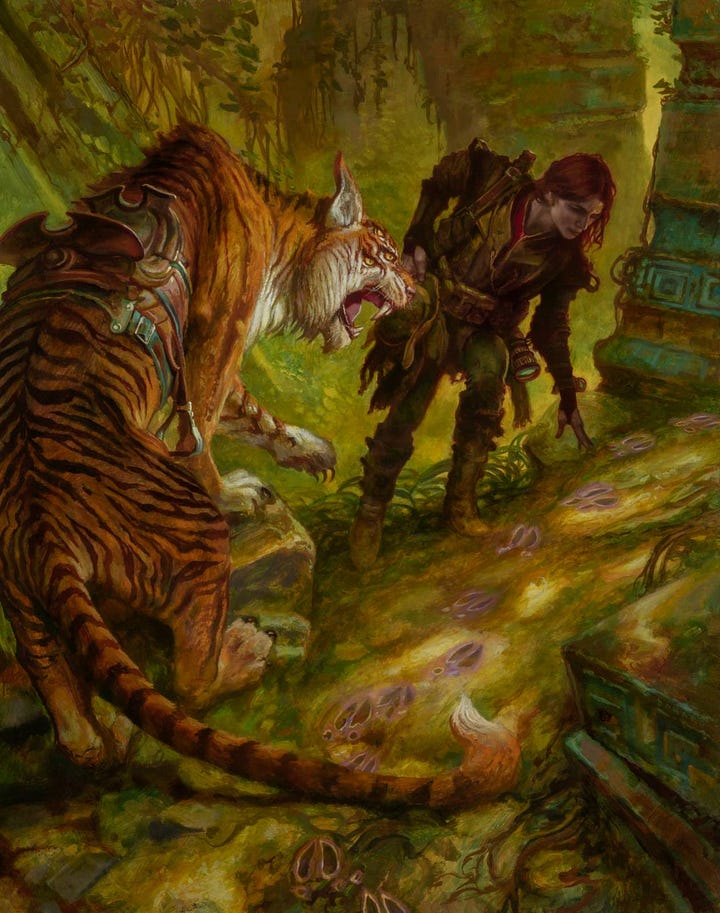
Most of these folks (save for Carissa Susilo, who is brand new to Magic) are all regular inclusions in past articles, and show the breadth of what great artists working on Magic can do. Phenomenal figures, championship-level compositions, and unique styles and uses of negative space. Each tells it’s own story, while at the same time beckoning for the viewer to ask more questions.
But the following three works bear special mention when looking closely at this newest body of work. They further the story while still being recognizable as Magic: The Gathering, but in a way that’s layered, effortless, and unforced. And in a setting that requires a certain degree of generality, that was most welcome.
Private Eye by Vincent Christiaens
You’ve heard Vorthos Mike say it a dozen times before: sometimes the best art in a set is on the commons and uncommons, and you just might never see it. Christiaens doesn’t always work traditionally, but make no mistake this man knows how to paint, and paint well. From the folds in the cloth to the color layered in the skin of the homunculus himself, this painting feels like you’re in the same room with the character. We know he’s a detective, but in a distinctly Magic-related way; there is no part of this painting that leads us to believing otherwise. It’s one of the best paintings in the set.
Warleader’s Call by Aldo Dominguez
’Story Spotlights’ are challenging for artists: they depict a pivotal moment in a much larger episode, but as such, are often narrowly defined, and cramped for creativity in order to ‘show the thing.’ But Dominguez captures the crescendo of the conflict about to unfold within the city, and in a stylistically interesting way. The Boros Legion is a no-nonsense outfit, and Aurelia did not earn her title as the ‘Warleader’ because she likes biscuits with a spot of afternoon tea. But this is just as beautiful as it is frightful, and as narratively rich as any piece in the set.
Dominguez drew his inspiration from Mexican muralist Jorge González Camarena, and we see that reflected in both composition and color. González Camarena was a part of the Mexican muralist movement of the 1950s and those social and political themes were well defined in his work, especially those murals completed in the second half of his career.
González Camarena captured a spirit of Mexican heritage as he thought it was to be remembered. And true to that inspiration, Domginuez’s Warleader’s Call recounts the event not as it’s happening, but as Ravnica remembers it. It’s a painting that would be found in the world it’s representing, living on as a chronicle of those things that had come to pass.
Prisoner’s Dilemma by Serena Malyon
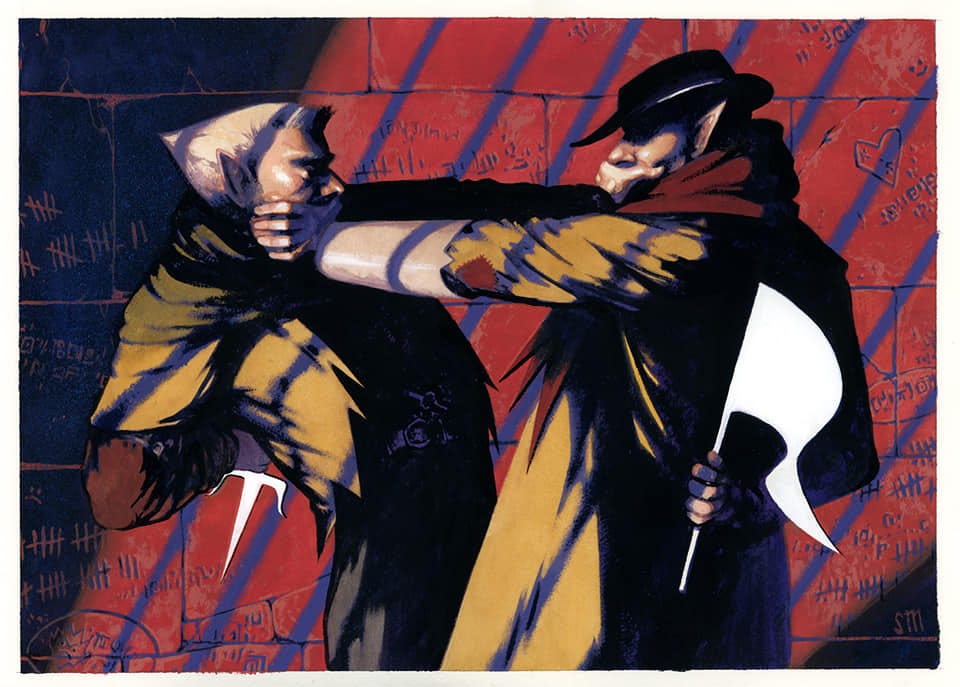
A departure from Malyon’s usual work, Prisoner’s Dilemma (which is named for the game theory experiment) captures the raw emotion of the inside of a noir-inspired setting. The figures, grasping at each other’s throats, are shown in the figurative and illustrative struggle of the ‘game,’ a projection of what the situation may look like inside someone’s head. The tension is perfectly balanced, and we as the viewer have both a front row seat while being caught in the middle at the same time. The white of the implements let us know this is not reality, but rather the perception of those participating, and yet, it still feels as if we’re eyewitnesses to each man’s equal downfall.
While this may not be her usual, it has immediately become one of her best yet for Magic, and I believe it is a cornerstone artistic achievement of the entire collection.
End Step
The artwork and flavor of Murders ar Karlov Manor, on the whole, did not resonate with me. As Sam from Rhystic Studies said of Theros: Beyond Death, this set felt like a pastiche of a pastiche; it’s Magic’s take on the murder mystery trope, but strange blend of thematics found in Streets of New Capenna two years ago, mixed with the thrice-visited and well-beloved plane of Ravnica. It’s hard to take something half done before, mix it with something possibly overdone, and hope that it comes out unique.
It’s not to say there were artistic misses or visual gaps in what the set was trying to accomplish. There are some very good paintings as we’ve seen here, and there is actually a lot of artistic continuity throughout the set’s nearly 500 new pieces of artwork; not something easy to do in modern Magic: The Gathering. But I think my letdown is derived from the cliché to tell a trope-laden story, and that stifles a lot of creativity in the name of narrative. Again, it’s not to say that it’s bad, but for me, it just didn’t translate into the overall artistic quality I’ve be accustomed to in the last few years.
Next time on The Stack, we’ll be looking at one of the best things to come out of Secret Lair since it began, and see just how far down the rabbit hole we can go with what works (and what doesn’t) in Magic’s greatest vehicle for alternative artwork.





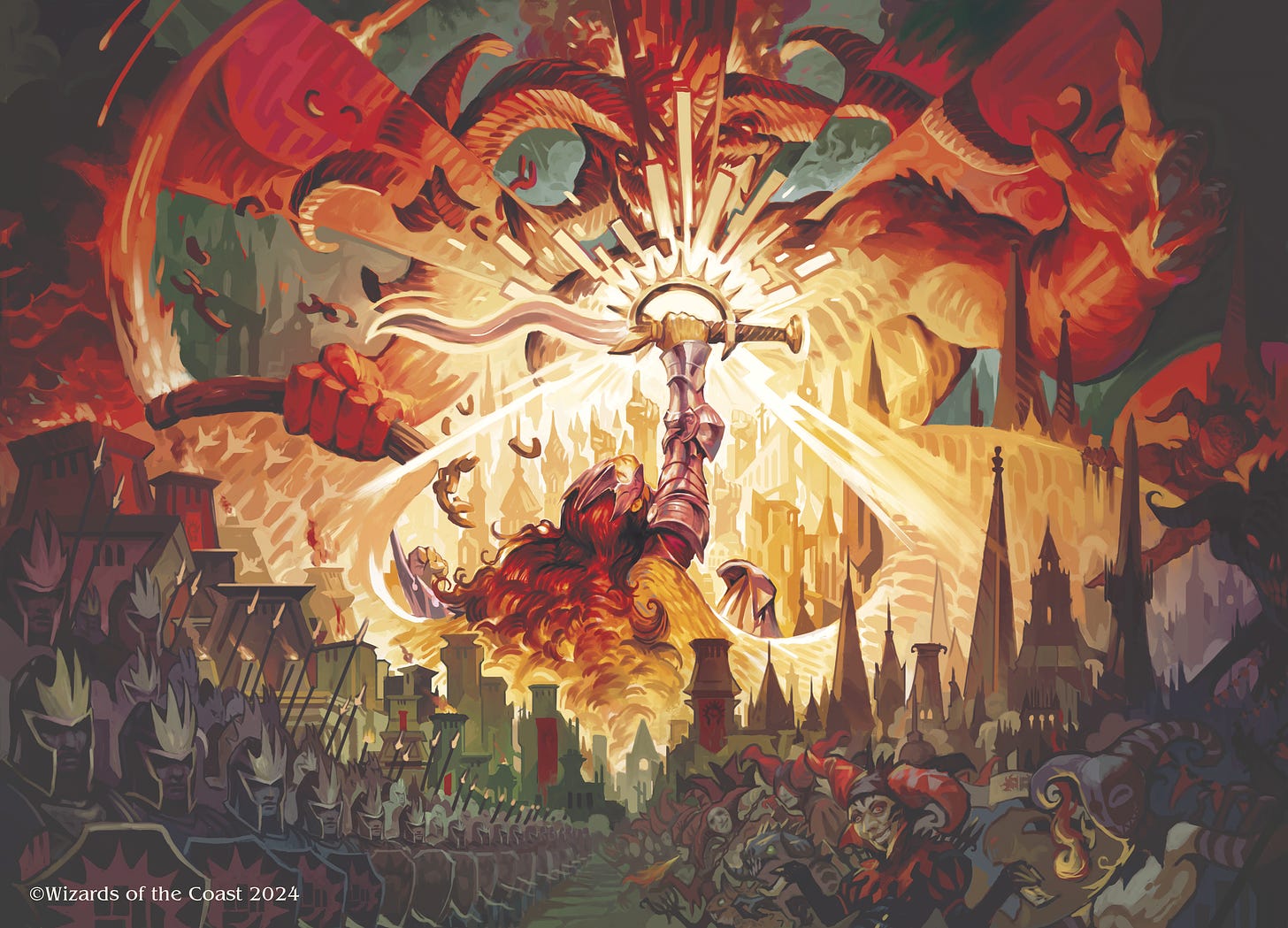


Eli Minaya's pieces for this set deserves more attention: Lightning Helix, Push/Pull, and Treacherous Greed.